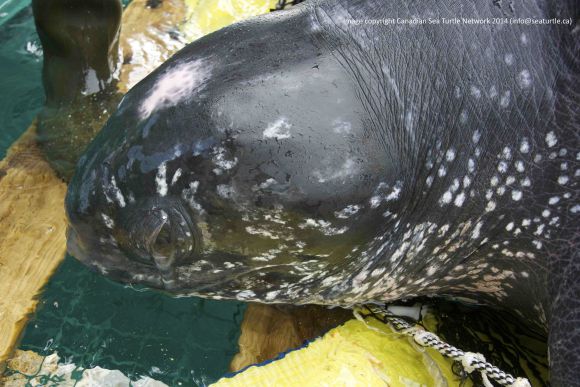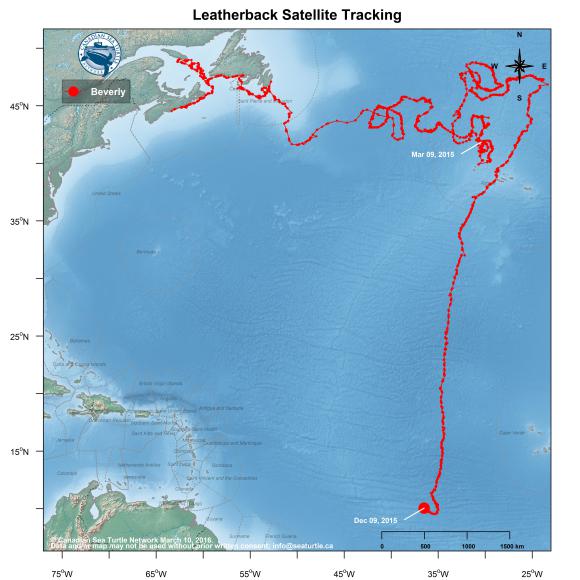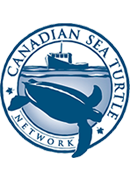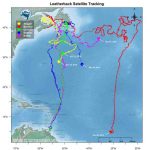
It’s generally the time of year that we start to get very excited about our turtles heading to the nesting beach.
I had been, as you know, particularly curious about what Beverly was going to do. Beverly has been one of our most interesting leatherbacks. She has a nesting history in Trinidad that suggested she should have nested there last year. But as you may remember, she didn’t. Instead, she slowly looped eastward.
You can see from the map below that Beverly went south this year. Part of me was glad in that I-told-you-so kind of way. She’s doing what she’s supposed to do, is how I felt. She’s doing the thing that fits my human, scientific-box-of-a-Beverly.
I settled back, excited to follow her to the nesting beach at Matura.

But then her transmitter stopped working. There are a number of reasons this might happen, but in this case, we think the cause was biofouling—when organisims like barnacles or algae grow on the satellite tag and prevent it from working properly.
So we have to wait to see what will happen next. Hopefully, our friends at Matura Beach in Trinidad will find her nesting there this year as she has in the past. They’ll recognize her either from the transmitter (if it hasn’t fallen off) or from her flipper tags.
Or maybe she’ll haul up on an isolated stretch of beach in Trinidad, where no one finds her and we have to wait for many years and many more nests to hear from her again.
The scientific part of me wants her to be found in the next few weeks. The part of me that likes happy endings wants this, too. The loop closed—from Canada to the Caribbean—feeding to nesting. A safe journey from one “home” to the other.
But then I remember, a few years ago, standing on Matura nesting beach myself in the dark night. The loud wind blowing clouds across the bright moon like dried fall leaves. The turtles hauling up out of the surf around me, slowly making their laboured way up the sand to lay their eggs as their species has done for millions of years. For millions of years.
And there is something I love about the idea of Beverly doing this away from our human eyes. Alone. Wild. It seems just like her.



Hello team!
My daughter, who is 8, and I, watched the Nature of Things show on Leatherback Turtles and now are very fascinated. She says she wants to help the leatherback turtles now. Thank you for inspiring her. From Calgary
Thank you for taking the time to write us. This is so nice to hear. If your daughter ever has any sea turtle questions, please feel free to contact us (info@seaturtle.ca).